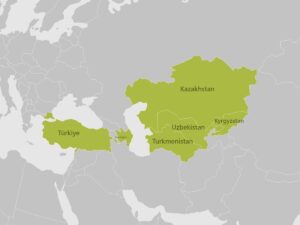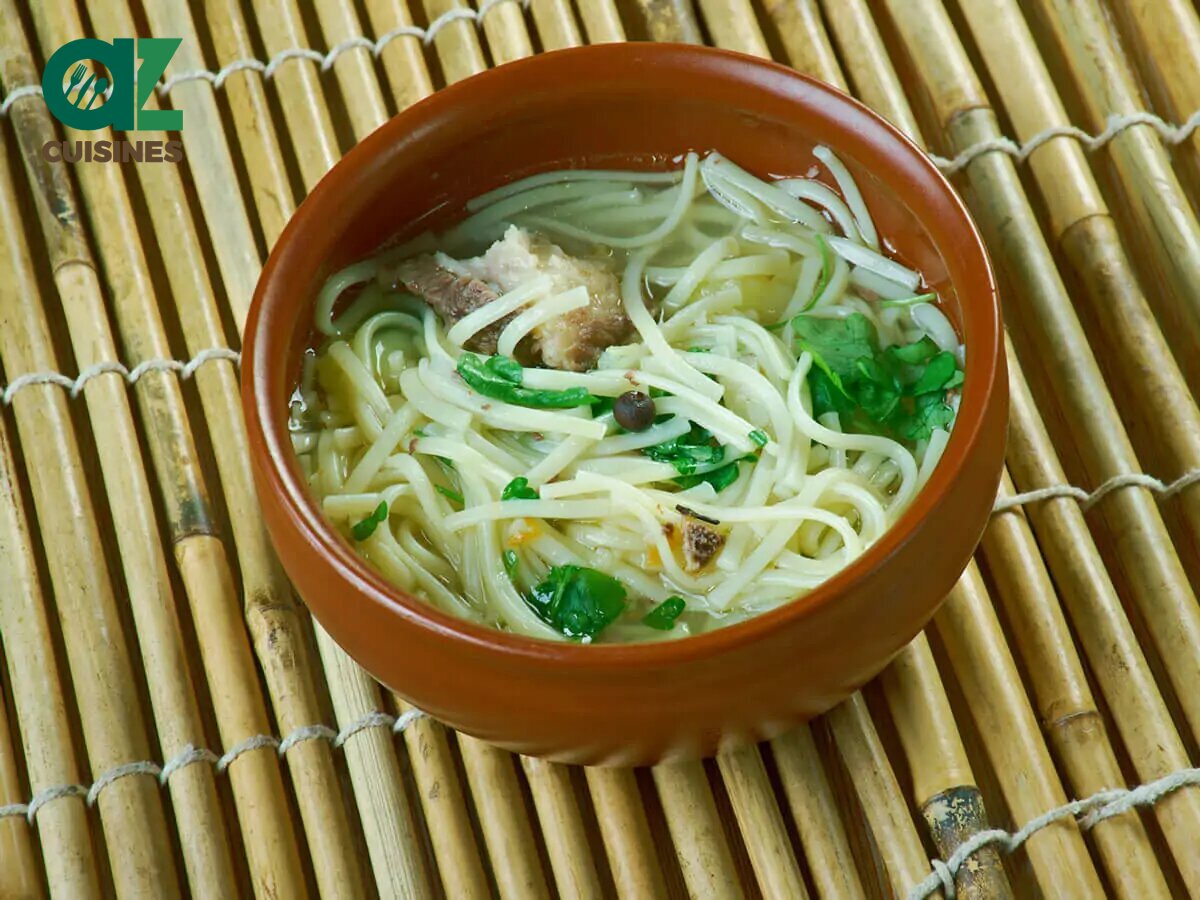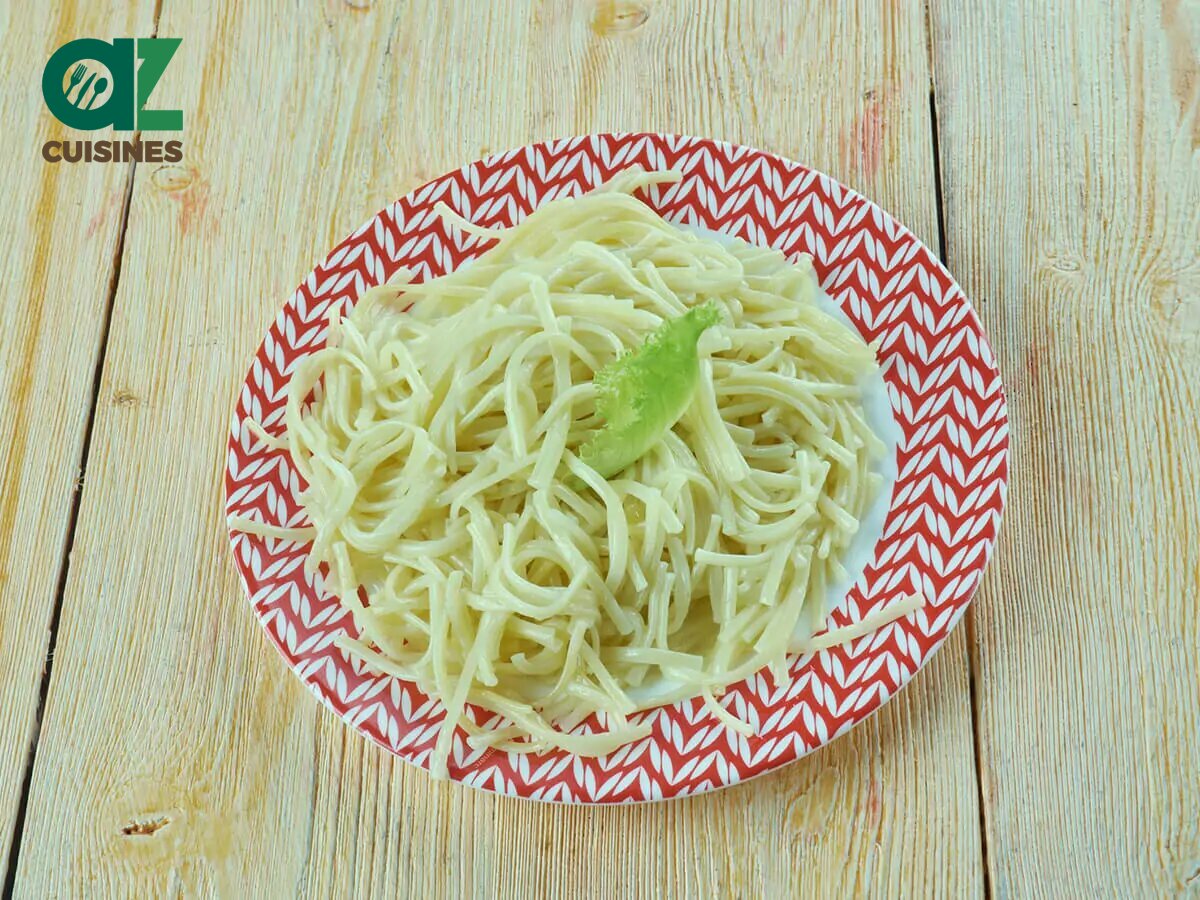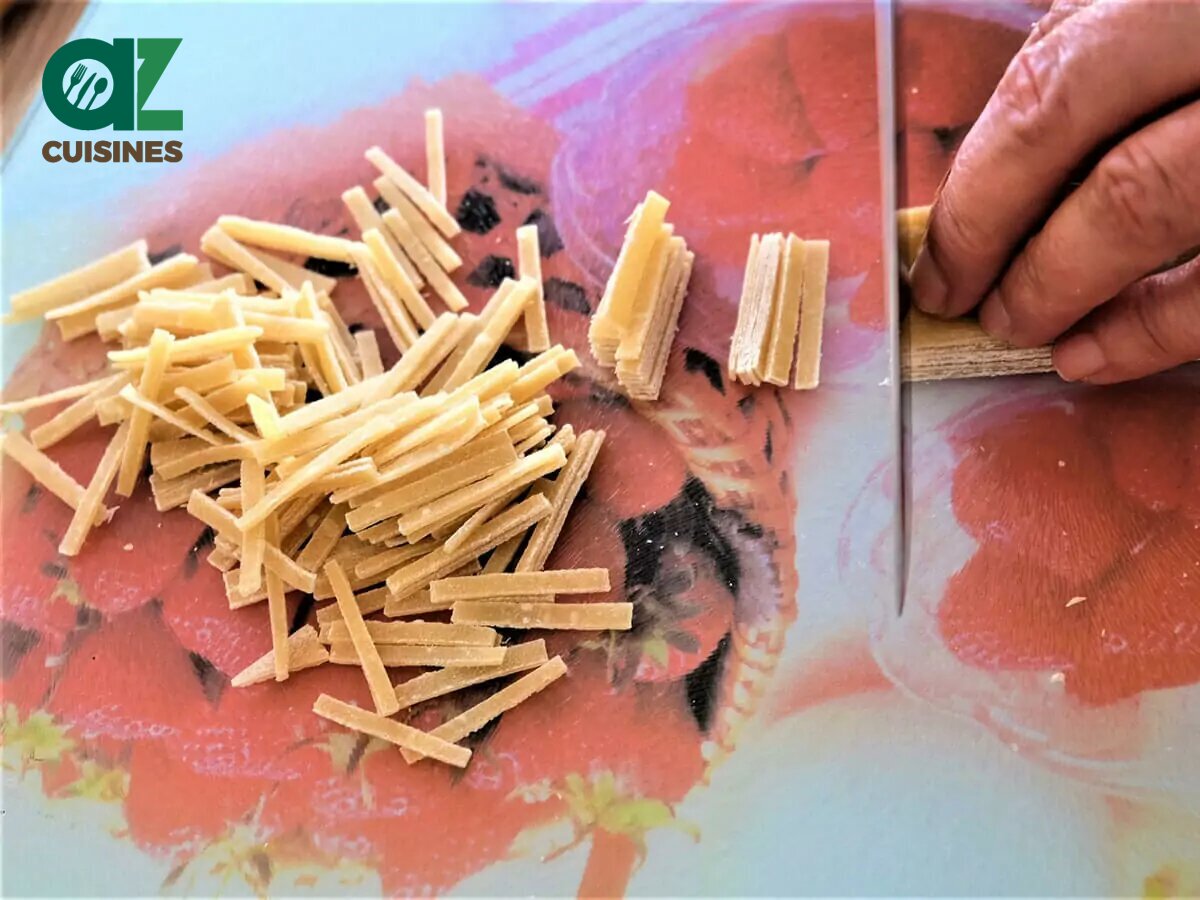Kesme: Basic Information
Pronunciation
Alternative Name(s)
Dish Type
Course
Mealtime
Popular Variations
Kesme: Ingredients and Preparation
Main Ingredients
Main Cooking Method
Preparation Process
Kesme: A Deep Dive
Cultural Significance
Taste
Texture
Aroma
Color
Serving Style
Serving Temperature
Accompaniment
Occasions
Seasons
Special Diets
Calories
Popularity
Popular Similar Dishes
- Ash reshteh
- Beshbarmak
- Laghman
Popular Dining Area
Kesme is a type of Central Asian and Turkish noodle made from flour, water, salt, eggs, and milk (optional). In Central Asia, kesme is mainly known in Turkic countries like Kazakhstan, Kyrgyzstan, Uzbekistan, and Turkmenistan.
The name “kesme” means “to cut” or “to slice” in local tongues, referring to how a flat, slightly dried dough sheet is sliced into strips and noodle strands in making kesme. Kesme is usually sun-dried or dehydrated in the oven if made for long-term storage.
The most popular way to prepare kesme is to cook it in a broth with meat and vegetables, like tomatoes, potatoes, carrots, garlic, and pepper.
Locals usually cook them in a kazan (a traditional wok-like cauldron in Central Asia). The finished noodle soup pairs well with yogurt, fresh herbs, or regional condiments.
Kesme noodle soup is a rich and hearty homemade comfort food that isn’t widely available in commercial eateries. In Turkey, people usually prepare the noodle soup in winter.
Read on, and I will give you insights into the pros and cons of this traditional noodle, as well as the questions people usually ask about this type of noodle.
Key Points
Kesme Images
Pros and Cons of Eating Kesme
Kesme has several upsides and downsides, which will be discussed in the table below.
Pros
Cons
Besides the advantages and disadvantages of kesme, I have other facts about this egg noodle variety to show you; let’s move on to the most common inquiries.








Adam Sam
Senior Food and Drink Editor
Expertise
Food Writer & Recipe Developer, Recipe Tester, Bartender, Cooking-video Maker, Editor In Chief
Education
Adam Sam, an experienced food writer and recipe developer, is passionate about blending diverse culinary traditions, national dishes, and innovative beverages, showcasing his proficiency in both traditional and modern recipe testing.
As the Editor-in-Chief, he elevates culinary content from street food to fine dining, focusing on Western cuisine and types of drinks at azcuisines.com, and is professional in creating engaging cooking videos that simplify complex dishes and ingredients.
His passion for food is evident in his writing, where he uniquely merges various cultures, traditions, and contemporary trends, skillfully combining classic recipes with modern cooking methods.